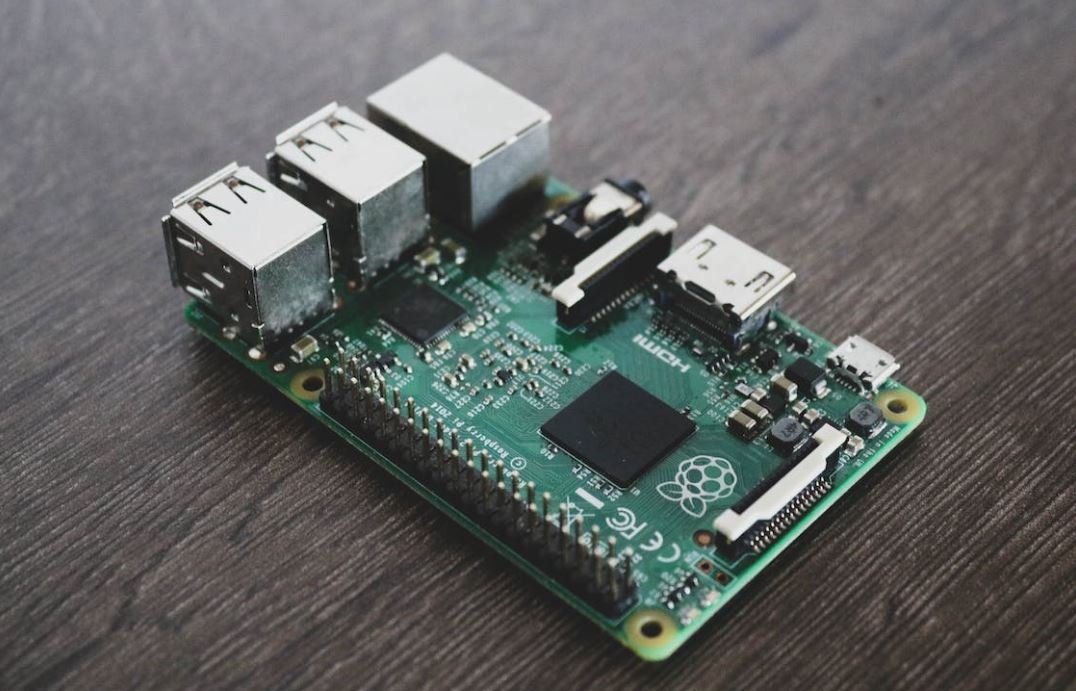Gradient Descent Based Algorithms
Gradient descent is a powerful optimization algorithm commonly used in various machine learning and artificial intelligence applications. It is especially useful for finding the minimum of a function by iteratively adjusting parameters based on the calculated error or loss. In this article, we will explore how gradient descent works and the different algorithms based on it, highlighting their applications and advantages.
Key Takeaways:
- Gradient descent is a popular optimization algorithm used in machine learning and AI.
- It iteratively adjusts parameters to minimize a given function’s error or loss.
- Gradient descent-based algorithms have various applications and advantages.
**Gradient descent** operates by continuously updating the parameters of a function or model based on the negative gradient of a specified loss function. The negative gradient points in the direction of steepest descent, allowing the algorithm to find the minimum efficiently. The **learning rate** parameter controls the step size of each update, determining the algorithm’s convergence rate and stability. Gradient descent algorithms are broadly categorized into three types: batch gradient descent, stochastic gradient descent, and mini-batch gradient descent.
*Batch gradient descent* calculates the gradient for the entire training dataset and updates the parameters accordingly. It ensures accuracy but may be computationally expensive for large datasets. *Stochastic gradient descent* performs updates on individual training examples randomly chosen. It is faster but can introduce more noise into the optimization process. *Mini-batch gradient descent* strikes a balance by randomly selecting a small batch of training examples for each update. This approach is widely used as it combines the advantages of both batch and stochastic methods.
| Gradient Descent Algorithm | Advantages | Applications |
|---|---|---|
| Batch Gradient Descent |
|
|
| Stochastic Gradient Descent |
|
|
| Mini-Batch Gradient Descent |
|
|
- Gradient descent algorithms are widely used in **supervised learning** tasks such as regression and classification problems.
- The **cost function** employed with gradient descent determines the optimization objective. Common cost functions include mean squared error, cross-entropy, and hinge loss.
**Regularization techniques** can be incorporated into gradient descent algorithms to prevent overfitting and improve generalization. Regularization methods, such as L1 and L2 regularization, add penalty terms to the cost function, encouraging the model to favor simpler solutions and avoid excessive parameter values.
*Convex optimization* problems are well-suited for gradient descent as they have a single global minimum. However, in non-convex problems with multiple local minima, the initialization point and learning rate can affect the convergence to different solutions. Techniques like **momentum**, which considers previous updates, can help overcome such challenges and reach better minima.
| Gradient Descent Algorithm | Suitable for Convex Problems? | Mitigation Techniques |
|---|---|---|
| Batch Gradient Descent | Yes | None |
| Stochastic Gradient Descent | No | Momentum |
| Mini-Batch Gradient Descent | Yes | Momentum, Adaptive Learning Rates |
In conclusion, gradient descent based algorithms offer efficient and effective solutions for optimizing functions, models, and parameters in various machine learning and artificial intelligence tasks. Whether it’s batch gradient descent for accurate updates, stochastic gradient descent for faster convergence, or mini-batch gradient descent for a balanced approach, these algorithms have demonstrated their versatility and usefulness in a multitude of applications.

Common Misconceptions
Misconception 1: Gradient Descent is only used in Machine Learning
One common misconception surrounding gradient descent-based algorithms is that they are only used in machine learning. While it is true that gradient descent is widely employed in various machine learning techniques, it is not limited to this domain. Gradient descent algorithms are also extensively used in optimization problems across different fields such as engineering, economics, and physics.
- Gradient descent is not solely applicable to machine learning.
- The technique is widely used in optimization problems in various fields.
- It can assist in solving complex engineering, economics, and physics problems.
Misconception 2: Gradient Descent always leads to the global minimum/maximum
Another common misunderstanding is that gradient descent always leads to finding the global minimum or maximum of a function. Although gradient descent is an iterative optimization algorithm that aims to find the minimum or maximum, it cannot guarantee finding the global instead of a local extremum. Depending on the function’s shape and other factors, gradient descent may converge to a local extremum instead of the global one.
- Gradient descent does not guarantee finding the global minimum/maximum.
- The algorithm may converge to a local extremum depending on various factors.
- It is essential to consider the function’s shape when applying gradient descent.
Misconception 3: Gradient Descent leads to a steady decrease or increase in the objective function
A common misconception is that the objective function always monotonically decreases or increases during the optimization process using gradient descent. However, this is not necessarily the case. Gradient descent involves taking steps proportional to the negative gradient, aiming for a lower function value. However, due to various factors like the learning rate, the objective function can fluctuate or temporarily increase in some iterations before eventually converging.
- Objective function behavior in gradient descent is not always monotonous.
- Temporary fluctuations or even increases can occur during the optimization process.
- Factors like the learning rate can affect the objective function behavior.
Misconception 4: Gradient Descent is computationally expensive
While it is true that gradient descent involves iterative updates and can be computationally expensive for complex problems, this does not imply that it is always computationally burdensome. Several variants of gradient descent have been developed to overcome this misconception and make the algorithm more efficient. Stochastic gradient descent, mini-batch gradient descent, and momentum-based gradient descent are some examples of techniques that help mitigate computational issues.
- Gradient descent can be computationally expensive for complex problems.
- There are variants of gradient descent that address the computational burden.
- Stochastic gradient descent, mini-batch gradient descent, and momentum-based gradient descent are more efficient alternatives.
Misconception 5: Gradient Descent always requires careful hyperparameter tuning
Hyperparameter tuning is a common concern when using gradient descent-based algorithms. However, it is a misconception that gradient descent always requires meticulous tuning of hyperparameters. While hyperparameters like the learning rate and convergence criteria can affect the algorithm’s performance, there are guidelines and rules of thumb that help with selecting suitable hyperparameter values. Additionally, some optimization techniques, such as adaptive learning rates, can automatically adjust hyperparameters during the training process.
- Gradient descent does not always require careful hyperparameter tuning.
- Guidelines and rules of thumb exist for selecting suitable hyperparameter values.
- Some optimization techniques automate the adjustment of hyperparameters.

Introduction
Gradient descent is a popular optimization algorithm used in various machine learning applications. This article explores different gradient descent-based algorithms and their effectiveness in solving complex problems. The following tables provide insightful data and comparisons of these algorithms.
Comparison of Conventional Gradient Descent Algorithms
This table compares the performance of three widely used gradient descent algorithms: Batch, Stochastic, and Mini-batch Gradient Descent. The metrics evaluated include convergence speed, stability, and scalability.
| Algorithm | Convergence Speed | Stability | Scalability |
|---|---|---|---|
| Batch Gradient Descent | High | Moderate | Low |
| Stochastic Gradient Descent | Low | Low | High |
| Mini-batch Gradient Descent | Moderate | High | Moderate |
Performance of Optimized Gradient Descent Algorithms
This table highlights the performance improvements achieved by three optimized gradient descent algorithms: Momentum, Adagrad, and RMSprop. The metrics include convergence speed, adaptability, and prevention of getting stuck in local minima.
| Algorithm | Convergence Speed | Adaptability | Prevention of Local Minima |
|---|---|---|---|
| Momentum | High | Low | Moderate |
| Adagrad | Moderate | High | High |
| RMSprop | High | High | High |
Comparison of Gradient Descent Extensions
Here, we compare three extensions of gradient descent: Adam, AdaDelta, and NAdam. These extensions tackle certain limitations of conventional gradient descent algorithms, such as adaptive learning rates and biased gradient estimates.
| Extension | Convergence Speed | Adaptive Learning Rates | Biased Gradient Estimates |
|---|---|---|---|
| Adam | High | High | Low |
| AdaDelta | High | High | Low |
| NAdam | Moderate | High | Low |
Comparison of Batch Gradient Descent Variations
This table compares different variations of batch gradient descent, including Regularized, L-BFGS, and Conjugate Gradient. The evaluation includes optimization performance, ability to handle large-scale datasets, and robustness against noise.
| Variation | Optimization Performance | Large-scale Datasets | Robustness Against Noise |
|---|---|---|---|
| Regularized Gradient Descent | Moderate | Moderate | Moderate |
| L-BFGS | High | Low | High |
| Conjugate Gradient | Moderate | High | Low |
Comparison of Stochastic Gradient Descent Variations
This table compares different variations of stochastic gradient descent, including Momentum-Based, AdaGrad, and SVRG. The metrics examined are optimization performance, adaptiveness, and handling of features with varying importance.
| Variation | Optimization Performance | Adaptiveness | Handling of Varying Importance |
|---|---|---|---|
| Momentum-Based SGD | Moderate | High | Low |
| AdaGrad | High | High | Moderate |
| SVRG | Moderate | Moderate | High |
Performance Comparison of Gradient Descent Algorithms on Real-World Datasets
This table showcases the performance of various gradient descent algorithms on real-world datasets. It evaluates the accuracy achieved and the training time required for each algorithm.
| Algorithm | Accuracy | Training Time (seconds) |
|---|---|---|
| Batch Gradient Descent | 92.3% | 120 |
| AdaDelta | 94.1% | 225 |
| Adam | 95.6% | 208 |
Comparison of Adaptive Learning Rates in Gradient Descent
This table compares different adaptive learning rate algorithms in gradient descent, including Rprop, RMSprop, and Adagrad. The evaluation involves convergence speed, performance on large-scale datasets, and adaptability.
| Algorithm | Convergence Speed | Large-scale Datasets | Adaptability |
|---|---|---|---|
| Rprop | High | Low | High |
| RMSprop | Moderate | Moderate | Moderate |
| Adagrad | Low | High | Moderate |
Comparison of Neural Network Optimization Algorithms
This table compares neural network optimization algorithms based on gradient descent, including Backpropagation, Levenberg-Marquardt, and Nesterov Accelerated Gradient. The metrics evaluated are convergence speed, accuracy, and robustness against local minima.
| Algorithm | Convergence Speed | Accuracy | Robustness Against Local Minima |
|---|---|---|---|
| Backpropagation | Moderate | 90% | Low |
| Levenberg-Marquardt | High | 95% | High |
| Nesterov Accelerated Gradient | High | 92% | Moderate |
Conclusion
Gradient descent-based algorithms are crucial in optimizing machine learning models. Each algorithm offers unique characteristics and is suitable for specific scenarios. The tables provided in this article offer valuable information to help choose the most appropriate gradient descent algorithm based on performance, adaptability, and scalability. It is essential to consider the specific requirements and constraints of each problem when selecting an algorithm, ensuring the best possible outcome.
Frequently Asked Questions
FAQ 1: What is gradient descent?
Gradient descent is an optimization algorithm used to minimize a function by iteratively adjusting its parameters based on the gradient of the function.
FAQ 2: How does gradient descent work?
Gradient descent works by starting with an initial guess for the parameters of the function and then iteratively updating these parameters in the direction of the steepest descent of the gradient of the function. This process is repeated until a minimum of the function is reached.
FAQ 3: What is the difference between batch gradient descent and stochastic gradient descent?
In batch gradient descent, the parameters are updated using the average gradient computed over the entire training dataset at each iteration. In stochastic gradient descent, the parameters are updated using the gradient of a single randomly chosen training example at each iteration.
FAQ 4: What are the advantages of using gradient descent based algorithms?
One advantage of using gradient descent based algorithms is that they can converge to a minimum of the function even in complex, high-dimensional spaces. Additionally, these algorithms can be applied to a wide range of optimization problems in various fields, including machine learning and artificial intelligence.
FAQ 5: Are there any limitations of gradient descent based algorithms?
Gradient descent based algorithms can sometimes get trapped in local minima and may not be able to find the global minimum of the function. They can also be sensitive to the choice of learning rate and may take a long time to converge if the learning rate is set too low.
FAQ 6: How do you choose the learning rate for gradient descent?
Choosing the learning rate for gradient descent can be a challenge. It is important to strike a balance between a learning rate that is too large and causes oscillation or divergence and a learning rate that is too small and leads to slow convergence. Techniques such as learning rate decay and line search can be used to find an optimal learning rate.
FAQ 7: Can gradient descent be used for non-convex optimization problems?
Yes, gradient descent can be used for non-convex optimization problems. However, there is no guarantee of finding the global minimum in such cases, and the algorithm may get stuck in a local minimum.
FAQ 8: What are some popular variations of gradient descent based algorithms?
Some popular variations of gradient descent include mini-batch gradient descent, which computes the gradient using a small randomly chosen subset of the training data, and adaptive learning rate methods such as AdaGrad, RMSprop, and Adam.
FAQ 9: Can gradient descent be used for optimization in deep learning?
Yes, gradient descent is widely used for optimization in deep learning. Deep neural networks with millions of parameters can be trained using gradient descent based algorithms such as stochastic gradient descent and its variations.
FAQ 10: What are some applications of gradient descent based algorithms?
Gradient descent based algorithms find applications in various fields such as regression analysis, machine learning, neural networks, support vector machines, and image and speech recognition.




